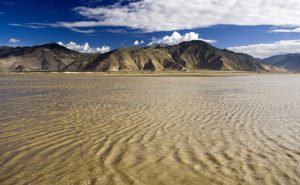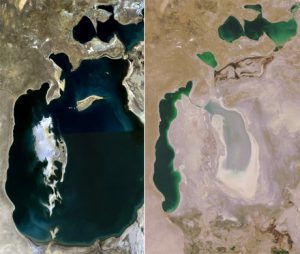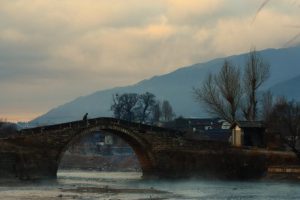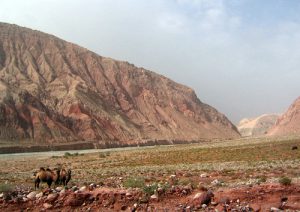Historic power outages in India this month deprived 670 million people of electricity, more than any previous global outage. These blackouts highlight the drive for hydroelectric dam construction underway in the Himalayas. The growing demand for electricity in India is the principal driver of an unprecedented wave of dam construction and planning in India, Bhutan and Nepal, with more under consideration by China and Pakistan. One 2008 study identified 46 large dams under construction and another 396 planned across the Himalayas.
While there are substantial debates about aspects of reservoirs and dams, the difficult issues of local, national and global change cannot be resolved with a discussion exclusively about the generic virtues and dilemmas of dam construction. The challenges faced by the most populous countries in the world, and those with the largest concentration of deprivation, will not be adequately served through a simple discussion of reservoirs and dams.
Water management and river development have historically played a key role in economic development. For example, water expert John Briscoe notes that the water storage available in dry, industrial countries, like USA and Australia is around 5,000 cubic metres per person, whereas in India and Pakistan it is 150 cubic metres per person.
Issues of power generation, flood mitigation, irrigation, livelihood, environmental and cultural preservation, and water management in general, involve difficult trade-offs raising questions of participation, representation and social goals at every level of society. The debate about dams and the reduction of some of the most egregious consequences of dams, particularly since the World Commission on Dams, are part of an ongoing and imperfect unfolding of democratic discussion around the role of rivers and water in development.
River and water management presents great opportunities and difficult choices for small communities and large, agriculture and industry, countryside and city, national governments and international cooperation. These challenges are particularly pressing in the Himalayan region, source of most of the great rivers of Asia. As environmental historian Kenneth Pomerantz writes, no other area of the world ‘combine[s] the same scale of population, scarcity of rainfall, dependence on agriculture, scope for mega-dam projects and vulnerability to climate change as those at stake within the greater Himalayan region.’
The stakes of water management have been raised in the Himalayas by economic growth in India and China, the rise of broader forms of diplomacy and discussion across national boundaries, and changes in river and glacier flows arising from global warming.
These climatic and social changes have transformed the context for cooperation and debate over the Himalayan rivers. Previous intergovernmental negotiations over water sharing in South Asia were based on the assumptions that rivers had stable futures; that social interaction with the rivers was guided by the demands of agrarian economies; and that transboundary negotiations could be approached through traditional diplomacy.
At the beginning of the twenty-first century, these three assumptions have changed. Glacial melting and climate change are expected to undermine the assumption that flow of the water in the rivers would remain constant. The rapid growth of industrial economies in India and China will intensify social demands on the rivers from dry season irrigation to hydroelectric power, and insert China as a possibly major player in Himalayan rivers. Government diplomacy is expanding to include commercial actors and being deepened by the rise of civil society interactions.
In the 1990s, several international agreements, particularly between India and Nepal, established important precedents for cooperation over water. But the potential for reduced conflict and greatly improved regional development has been only partly realised. One aspect of this slow progress is the lack of an institutional framework to implement and evaluate any agreement. More recently, a wave of hydroelectric projects in the Himalayan valleys of India, Pakistan and Nepal, has raised concerns. Foreign capital, including from China, adds to the complexity of the situation. China’s own hydroelectric projects on the Yarlung Zangbo-Brahmaputra have potentially important implications for Bangladesh and India.
In some of our work, we have proposed a new regulatory body that encompasses all the nations with stakes in the Himalayan rivers, and a mix of expertise and interests, including a panel of technical experts, experienced diplomats from each country, and representatives of key interest groups. A new water regulatory institution could serve as a knowledge clearing house and source of technical information for a range of water issues. It could also monitor the health of river basins, the progress of various projects, and adherence to international agreements.
Potentially, some level of enforcement authority could be assigned to this body by member nations, though issues of sovereignty will always be delicate. At the least, violators or non-performers can be named and shamed if such an institution increases disclosure and transparency, and provides a centralised source of the resulting information.
From India’s perspective, China’s presence in such a body would unavoidably change the strategic balance of South Asian river discussions, especially in the direction of reducing India’s bargaining power, or ability to act relatively unilaterally as a result of its dominant position in South Asia. Yet the ability of China to drastically affect water supplies throughout South Asia, particularly as the impacts of climate change become more severe, means that its inclusion is necessary and valuable to all parties.
The participation of both Chinese and Indians in the eight-nation International Center for Integrated Mountain Development (ICIMOD), including senior politicians and technical experts, indicates that cooperation between the two giants in this sphere is feasible. ICIMOD has made significant progress in sharing environmental data across borders, for example.
What interests would sustain such a regulatory authority? There are two. First, a new basis for Himalayan cooperation makes possible new water and environmental management initiatives at small and large scale. In other words, there are benefits to be gained from establishing an institutional basis for cooperation in this arena. For example, conservation, livelihood generation and hazard management are all likely to be more effectively achieved through cooperation at the eco-system level. In addition, less problematic hydroelectric power generation opportunities may be forgone, in the absence of international cooperation.
Second, the challenges of climate change and glacial melting generate uncertainties which will be hard to respond to without such an institution. That is, the costs of not cooperating are likely to be substantial, and this will rapidly and increasingly become apparent. For example, India and Bangladesh lack information required to plan for the increasingly unpredictable flood and dry season flows that plague the Brahmaputra.
The history of management of the Mekong River basin, from the control of colonial powers to a Mekong River Commission – an intergovernmental agency that does not include major upstream nations (China and Myanmar) – indicates some of the problems with traditional nationalist approaches to multilateral cooperation, as well as the limitations of investment-oriented multilateral institutions. Most obviously, China’s construction of dams on the upper reaches of the Mekong River imposes changes for downstream nations which cannot be adequately discussed in the Commission as it is presently constituted.
Of course there is no ideal or easy solution to these trade-offs and the success of any such institution depends on the specifics of design and implementation. But both ICIMOD and the Mekong River Commission can provide a starting point for thinking about the appropriate institutional design. The importance and urgency of the problem, to our minds, requires some institutional innovation, and design and implementation can only follow putting the idea on the agenda of policymakers in the countries at risk from future water shortages and crises.
A new Himalayan water management institution could provide a forum for diplomatic, informed and representative discussion of the many demands and powerful climatic uncertainties facing the countries served by the great rivers of Asia.
In principle, there is much to be gained from wider discussion by the many groups and interests affected by change and management of these rivers. Flexibility and innovation will be required, particularly by the great powers India and China which have previously charted autonomous water management decisions with little concern for neighbouring peoples and communities.
Ben Crow is Professor of Sociology and Nirvikar Singh is Professor of Economics at the University of California, Santa Cruz.
Homepage image by MREBRASIL




